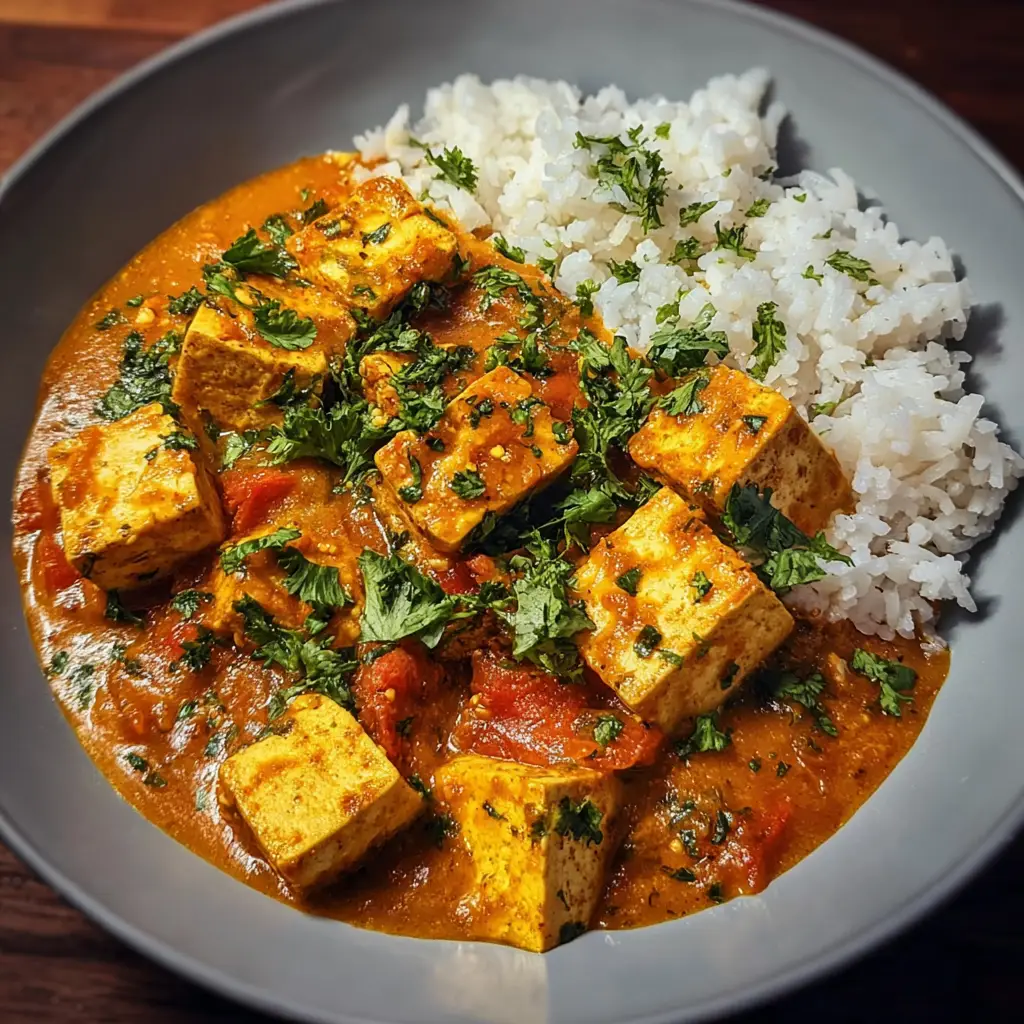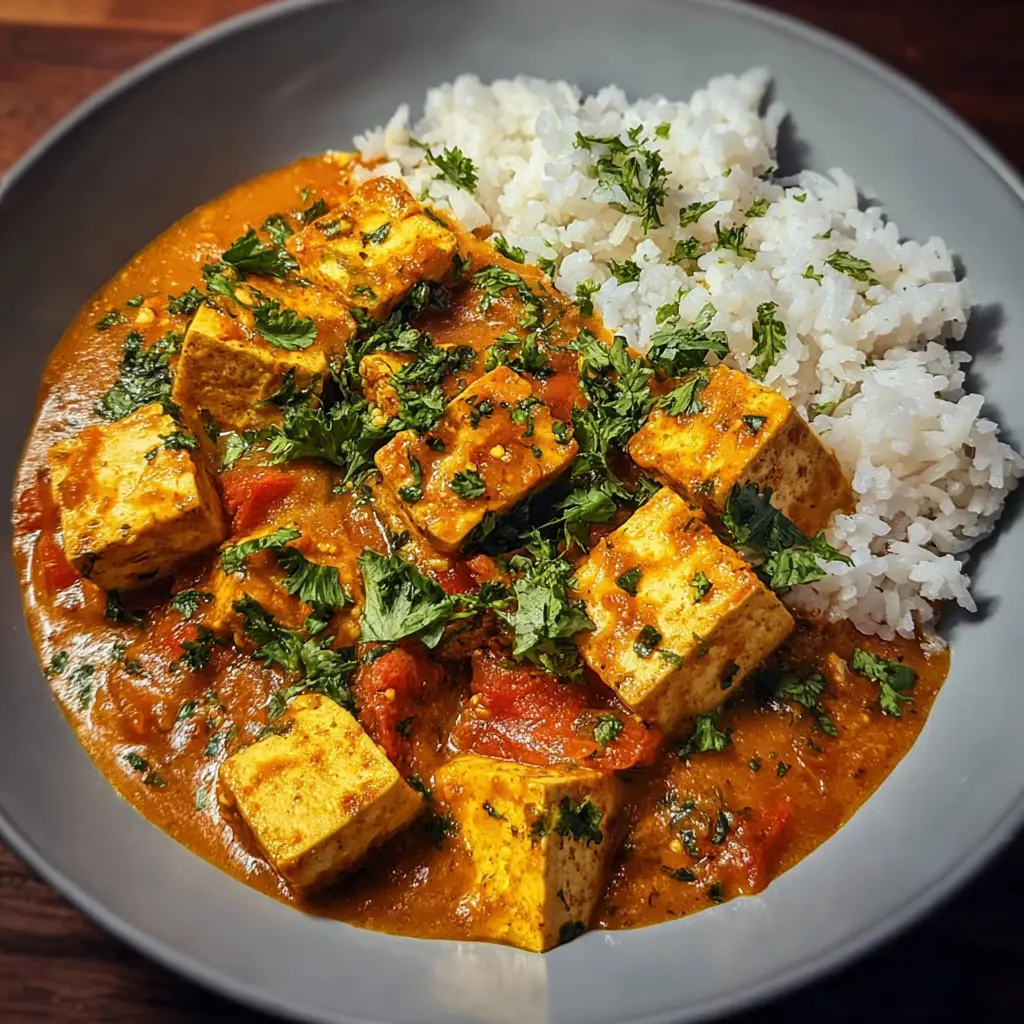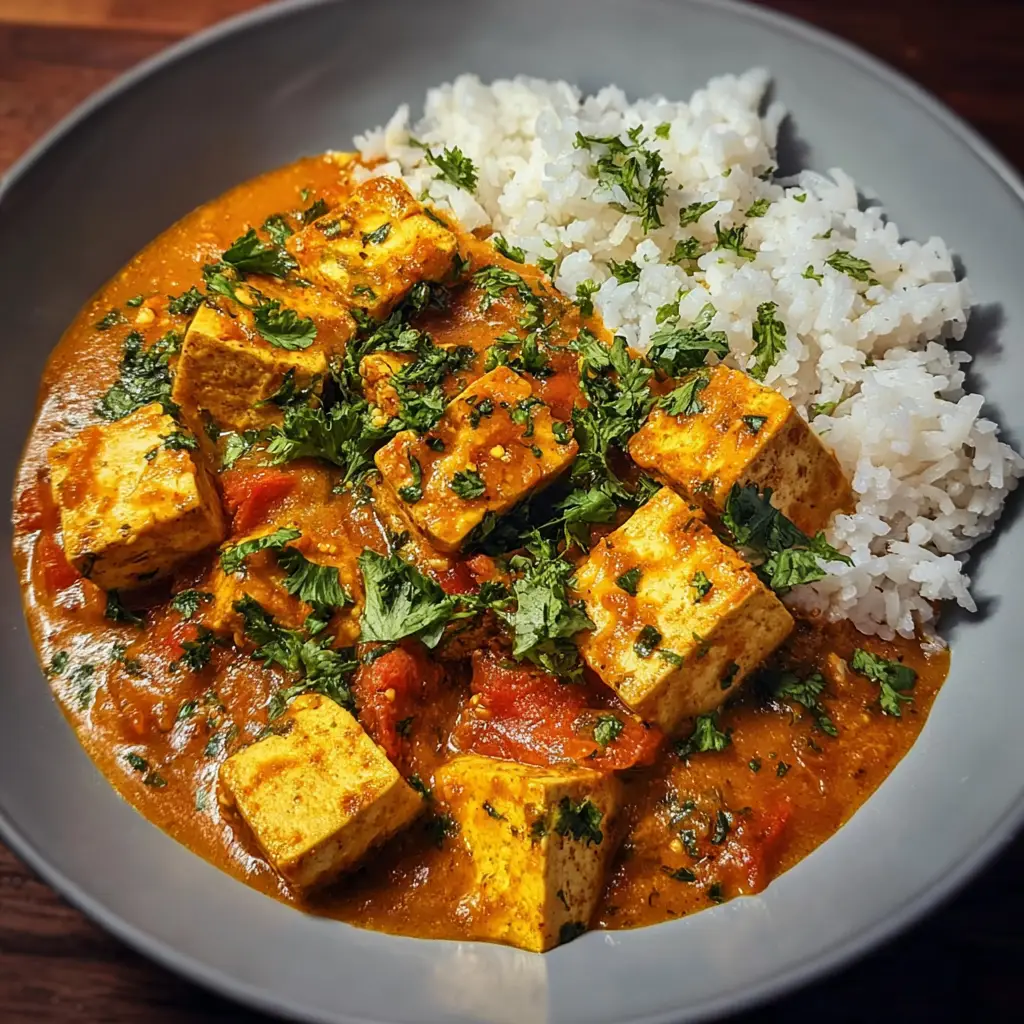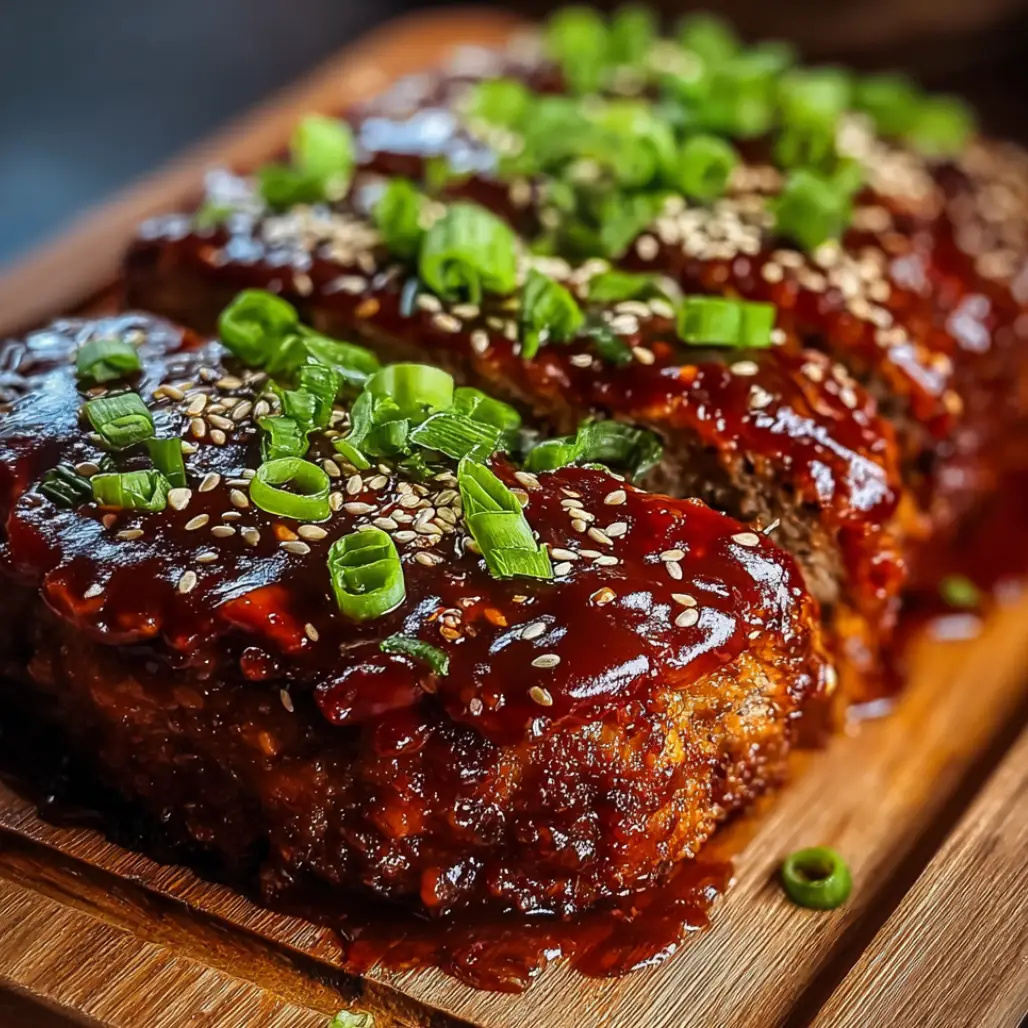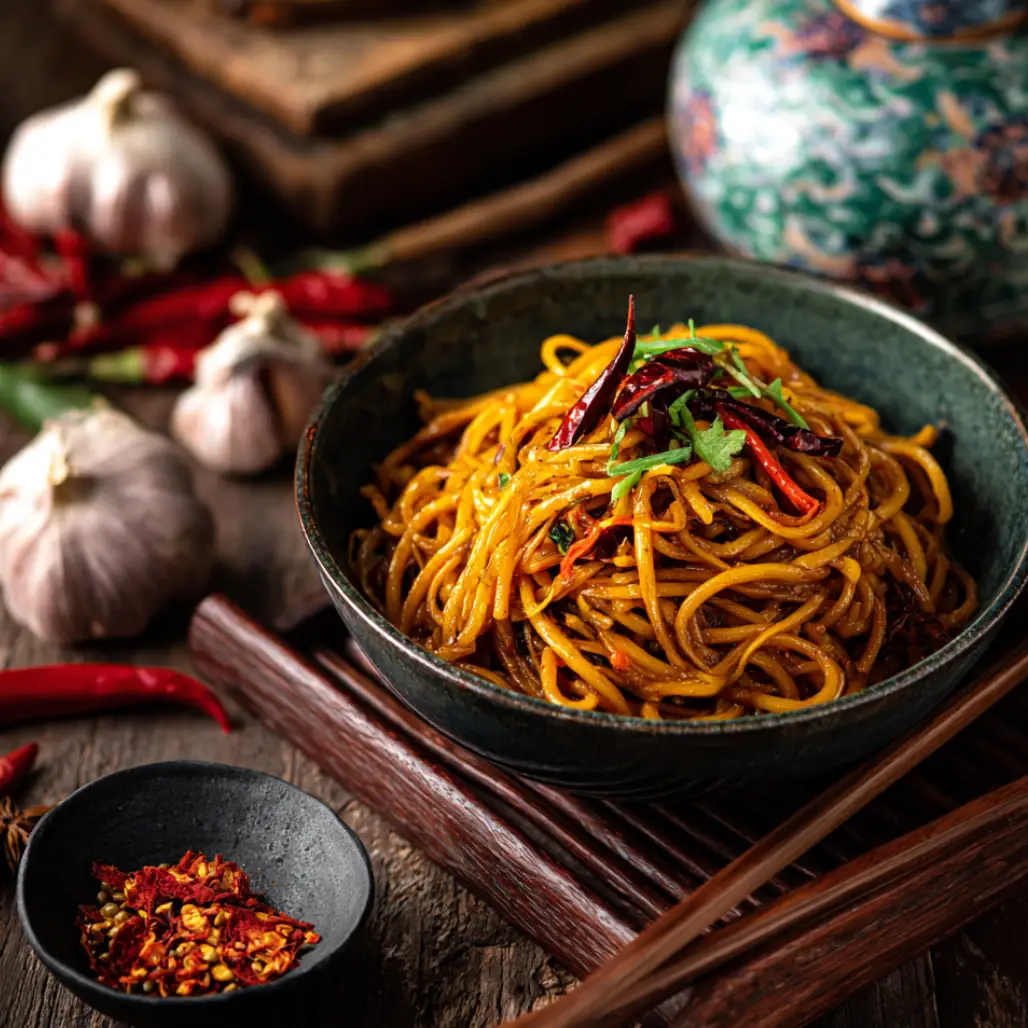| Prep Time | Cook Time | Total Time | Serves |
|---|---|---|---|
| 15 minutes | 25 minutes | 40 minutes | 4 |
Why This Easy Tofu Curry Recipe Works
The exceptional success of this easy tofu curry stems from the thoughtful layering of flavors and textures that work harmoniously to create a deeply satisfying meal because each component serves multiple purposes while contributing to the overall richness and complexity that makes this dish so memorable. Tofu provides an excellent protein foundation because its mild flavor acts as a perfect canvas for absorbing the aromatic spices while its firm texture holds up beautifully during cooking without becoming mushy or falling apart.
The spice combination creates authentic curry flavors because traditional Indian seasonings like turmeric, cumin, coriander, and garam masala work synergistically to develop complex taste profiles that evolve throughout the cooking process. These spices also provide significant health benefits because many contain anti-inflammatory compounds and antioxidants that support overall wellness while delivering exceptional flavor.
Coconut milk serves as both a cooking medium and flavor enhancer because its natural richness creates the creamy base that defines great curry while its subtle sweetness balances the earthiness of spices and provides the luxurious mouthfeel that makes this dish so appealing. The fat content in coconut milk also helps carry fat-soluble vitamins and aromatic compounds throughout the dish because these elements distribute more effectively in oil-based environments.
The one-pot cooking method ensures optimal flavor development because allowing all ingredients to simmer together creates opportunities for taste melding while the extended cooking time allows spices to bloom fully and tofu to absorb maximum flavor. This technique also simplifies preparation because fewer dishes and less active cooking time make this recipe accessible for busy weeknight dinners.
Temperature control throughout cooking preserves delicate flavors because gentle simmering prevents burning while allowing proper reduction that concentrates tastes and creates the ideal consistency that coats ingredients without being too thick or too thin.
Essential Ingredients for Perfect Easy Tofu Curry
For the Curry Base:
- 1 package (14-16 oz) extra-firm tofu (drained and cubed)
- 2 tablespoons vegetable oil (or coconut oil)
- 1 large onion (diced)
- 3 cloves garlic (minced)
- 1 tablespoon fresh ginger (grated)
- 1 can (14 oz) coconut milk (full-fat preferred)
- 1 can (14 oz) diced tomatoes (undrained)
- 1 cup vegetable broth (low-sodium)
For the Spice Blend:
- 2 teaspoons curry powder
- 1 teaspoon ground cumin
- 1 teaspoon ground coriander
- 1/2 teaspoon turmeric powder
- 1/2 teaspoon garam masala
- 1/4 teaspoon red pepper flakes (optional)
- 1 teaspoon salt (or to taste)
- 1/2 teaspoon black pepper
For Enhancement and Serving:
- 2 cups fresh spinach (or other leafy greens)
- 1 tablespoon lime juice (freshly squeezed)
- Fresh cilantro (for garnish)
- Cooked basmati rice (for serving)
- 1 tablespoon cornstarch (optional, for tofu coating)
Creating exceptional easy tofu curry requires selecting quality ingredients because the simplicity of this dish means that each component must contribute optimal flavor and texture to achieve the sophisticated results that distinguish homemade curry from ordinary alternatives. Extra-firm tofu provides the ideal protein base because its lower water content and denser structure hold up better during cooking while creating satisfying texture that mimics more traditional curry proteins.
Fresh aromatics including garlic, ginger, and onion form the flavor foundation because these ingredients create the aromatic base that defines authentic curry while providing the essential oils and compounds that bloom during cooking to create complex taste layers. Quality spices make an enormous difference because fresh, potent seasonings provide more intense flavor than aged alternatives while ensuring that the characteristic warmth and depth of curry comes through clearly.
Full-fat coconut milk delivers superior results because its higher fat content creates richer texture and better flavor carrying capacity while providing the luxurious mouthfeel that makes curry so satisfying and comforting.
Easy Tofu Curry
The Art of Creating Perfect Easy Tofu Curry
Mastering the art of easy tofu curry preparation involves understanding how different cooking techniques affect flavor development and texture because this knowledge allows you to create consistently excellent results while maximizing the potential of each ingredient. The process begins with proper tofu preparation because removing excess moisture and achieving the right texture sets the foundation for a curry where every element contributes to the overall success.
Easy Tofu Curry
Spice blooming represents a crucial technique because heating spices in oil releases essential oils and aromatic compounds that would remain locked away if simply added to liquid ingredients. This process intensifies flavors significantly because the heat activates dormant compounds while the oil helps distribute these elements throughout the entire dish.
Layered cooking builds complexity because adding ingredients in the proper sequence allows each element to contribute its unique characteristics while preventing delicate components from overcooking. Understanding timing ensures that aromatics don’t burn while vegetables maintain appropriate texture and proteins absorb maximum flavor.
Temperature management throughout preparation affects both safety and flavor because proper heat control allows spices to develop fully while preventing scorching that could create bitter tastes. The simmering phase requires patience because extended gentle cooking allows flavors to meld while liquids reduce to create the ideal consistency.
Texture considerations influence the final eating experience because balancing creamy sauce with substantial protein and tender vegetables creates satisfying mouthfeel that makes each bite interesting and enjoyable while ensuring that no single element dominates the dish.
Step-by-Step Instructions for Easy Tofu Curry
Preparing the Tofu Foundation
Begin by draining the tofu and cutting it into uniform 1-inch cubes because consistent sizing ensures even cooking while the larger pieces hold their shape better during the simmering process. Pat the tofu pieces completely dry with paper towels because removing excess moisture prevents oil splattering while helping the tofu develop better texture during cooking.
Optional: Toss the cubed tofu with cornstarch because this light coating creates a slightly firmer exterior that holds up better in curry while adding subtle texture contrast that enhances the overall eating experience. Heat vegetable oil in a large, heavy-bottomed pot or Dutch oven over medium-high heat because this temperature allows proper browning without burning while the heavy pot distributes heat evenly.
Professional Tip: Don’t overcrowd the tofu pieces in the pan because proper spacing allows each cube to brown evenly while overcrowding creates steam that prevents proper texture development.
Key Points: Proper tofu preparation ensures better texture because well-drained, evenly sized pieces absorb flavors more effectively while maintaining structural integrity throughout the cooking process.
Building the Aromatic Base
Add the diced onion to the heated oil and cook for 5-7 minutes until softened and lightly golden because this foundation step develops sweetness while creating the flavor base that supports all other ingredients. The onions should become translucent and fragrant because this indicates proper caramelization that adds depth to the final curry.
Stir in the minced garlic and grated ginger, cooking for another 1-2 minutes until fragrant because these aromatics require brief cooking to release their essential oils without becoming bitter or harsh. Watch carefully during this step because garlic burns quickly and bitter garlic can ruin the entire dish.
Professional Tip: Keep the aromatics moving in the pan because constant stirring prevents burning while ensuring even cooking that develops maximum flavor from these essential ingredients.
Key Points: Proper aromatic development creates the flavor foundation because well-cooked onions, garlic, and ginger provide the essential taste base that distinguishes authentic curry from bland alternatives.
Blooming the Spice Blend
Add all the spices—curry powder, cumin, coriander, turmeric, garam masala, and red pepper flakes—to the aromatic base and stir constantly for 1 minute because this blooming process activates the spices while preventing burning that could create bitter flavors. The spices should become very fragrant and slightly darker in color because this visual cue indicates proper activation.
If the mixture begins to stick or seems too dry, add a tablespoon of vegetable broth because this prevents burning while allowing the spices to continue cooking properly. The blooming process is complete when the kitchen fills with aromatic curry scents because this indicates that the essential oils have been released and distributed.
Professional Tip: Time this step carefully because over-bloomed spices become bitter while under-bloomed spices don’t develop full flavor potential, so watch for color changes and aromatic development.
Key Points: Spice blooming is essential for authentic flavor because this technique releases compounds that remain dormant when spices are simply mixed into liquids without proper heat activation.
Creating the Curry Base
Pour in the coconut milk, diced tomatoes with their juice, and vegetable broth, stirring well to combine all ingredients because thorough mixing ensures even distribution of flavors while preventing separation that could affect texture. Bring the mixture to a gentle boil because this initial high heat helps meld flavors while beginning the reduction process that concentrates taste.
Add the prepared tofu cubes to the simmering curry base, stirring gently to coat each piece with sauce because this ensures even flavor absorption while preventing the tofu from sticking to the bottom of the pot. Reduce heat to low and cover the pot because gentle simmering allows flavors to develop while preventing excessive evaporation that could make the curry too thick.
Professional Tip: Maintain a gentle simmer rather than a rolling boil because aggressive boiling can break up the tofu while causing the coconut milk to separate and create an unpleasant texture.
Key Points: Proper liquid ratios create ideal consistency because the right balance of coconut milk, tomatoes, and broth produces curry that coats ingredients without being too thick or too thin.
Finishing and Final Seasoning
Simmer the curry uncovered for 15-20 minutes, stirring occasionally, until the sauce has thickened slightly and the tofu has absorbed flavor because this extended cooking time allows all elements to meld while achieving the proper consistency. Taste and adjust seasoning with salt, pepper, or additional spices because personal preference and ingredient variations may require customization.
Add the fresh spinach and lime juice during the final 2-3 minutes of cooking because these delicate ingredients require minimal heat to wilt and brighten the dish without becoming overcooked. Stir gently until the spinach wilts completely because this final addition provides color, nutrition, and fresh flavor contrast.
Professional Tip: Add lime juice at the very end because acid can cause coconut milk to curdle if added too early, while the bright citrus flavor is best preserved with minimal heat exposure.
Key Points: Final seasoning adjustments ensure optimal taste because curry flavors concentrate during cooking and may require balancing to achieve the perfect harmony of spices, heat, and richness.
Professional Tips for Perfect Easy Tofu Curry
Ingredient temperature management significantly affects cooking results because room temperature ingredients integrate more smoothly while cold ingredients can cause coconut milk to seize or separate during cooking. Remove coconut milk from the refrigerator 30 minutes before cooking because this prevents temperature shock that could affect texture while ensuring smooth incorporation into the curry base.
Spice quality makes an enormous difference in final flavor because fresh, properly stored spices provide exponentially more flavor than aged alternatives that may have lost their essential oils. Replace ground spices every 6-12 months because older spices become muted and require larger quantities to achieve desired flavor intensity, potentially affecting the balance of your curry.
Coconut milk selection impacts both texture and flavor because full-fat versions provide richer results while light alternatives can create thinner, less satisfying curry. Always shake canned coconut milk before opening because separation is natural and stirring incorporates the cream with the liquid for optimal consistency.
Tofu storage before cooking affects final texture because improperly stored tofu can develop off-flavors while proper handling maintains the neutral taste that makes it such an excellent flavor absorber. Use tofu within a few days of opening because freshness directly impacts both safety and taste quality.
Heat control throughout cooking prevents common problems because too high heat can cause coconut milk to separate while too low heat prevents proper spice blooming and flavor development. Maintain consistent medium heat during initial cooking phases because this temperature range allows proper caramelization and spice activation without burning delicate ingredients.
Creative Variations of Easy Tofu Curry
Transform your basic easy tofu curry into exciting new variations by incorporating different vegetables, proteins, or regional spice blends because these adaptations allow you to customize the dish for seasonal availability, dietary preferences, or simply to keep your meal rotation interesting. Thai-inspired tofu curry substitutes red curry paste for Indian spices because this Southeast Asian approach creates entirely different flavor profiles while maintaining the creamy coconut base that makes curry so appealing.
Vegetable-loaded tofu curry incorporates seasonal produce like bell peppers, sweet potatoes, cauliflower, or green beans because these additions provide varying textures, colors, and nutritional benefits while creating more substantial meals. Different vegetables require different cooking times because root vegetables need longer simmering while leafy greens require only brief heating to maintain optimal texture and nutrition.
Protein-enhanced tofu curry combines tofu with chickpeas, lentils, or tempeh because these additions create more complex protein profiles while providing different textures that make each bite more interesting. Multiple protein sources also increase the overall nutritional density because different plant proteins provide complementary amino acid profiles.
Spicy tofu curry increases heat levels through additional chili peppers, cayenne, or hot curry pastes because these modifications cater to those who prefer more intense spice experiences while maintaining the fundamental flavor balance that makes curry so satisfying. Heat levels can be adjusted gradually because it’s easier to add spice than to remove it from finished dishes.
Creamy cashew tofu curry incorporates soaked cashews blended with vegetable broth because this addition creates extra richness while providing a different flavor profile that complements the existing coconut base. The cashews also add additional protein and healthy fats because these nuts provide sustained energy while contributing to the overall nutritional value.
Regional spice blend variations explore different curry traditions because Madras curry powder creates more intense heat while mild curry blends work better for sensitive palates, allowing you to customize the dish based on your family’s preferences and tolerance levels.
Perfect Pairing Ideas for Easy Tofu Curry
The rich, complex flavors of easy tofu curry pair beautifully with a variety of accompaniments because the creamy, spiced sauce complements both simple starches and more elaborate side dishes while its substantial protein content makes it satisfying as a complete meal. Traditional basmati rice provides the classic pairing because its aromatic, fluffy texture absorbs curry sauce perfectly while its neutral flavor doesn’t compete with the complex spice blend.
Brown rice offers a nuttier, more nutritious alternative because its higher fiber content and additional minerals provide better nutritional balance while its slightly chewier texture creates interesting contrast with the smooth curry sauce. Quinoa serves as an excellent gluten-free option because this complete protein grain adds nutritional value while providing a different textural element that makes the meal more substantial.
Fresh naan bread or roti provides traditional accompaniments because these flatbreads offer convenient vehicles for scooping curry while their mild flavors complement rather than compete with the spiced sauce. For those avoiding gluten, cauliflower rice creates a low-carb alternative because its neutral flavor and rice-like texture work well with curry while significantly reducing the overall carbohydrate content.
For those interested in creating comprehensive Indian-inspired meals, consider exploring the savory sides collection at Solush Recipes because these dishes often feature complementary spices and cooking techniques that would enhance your curry dinner while providing additional variety and nutritional balance.
Simple cucumber raita or yogurt-based sauces provide cooling contrast because their fresh, tangy flavors balance the warming spices while adding probiotics and additional protein to the meal. The cool temperature and creamy texture create pleasant relief from spicy elements because dairy products help neutralize capsaicin compounds that create heat sensations.
Fresh salads featuring crisp vegetables and light dressings complement curry beautifully because their refreshing qualities cleanse the palate between bites while providing textural contrast that makes the meal more interesting and satisfying.
Discover More Plant-Based and International Cooking Inspirations
Expanding your repertoire beyond easy tofu curry opens up exciting possibilities for exploring plant-based cooking and international flavors because understanding the principles that make this dish successful allows you to apply similar techniques to other cuisines and ingredients while developing confidence in vegetarian and vegan cooking methods. The art of building flavor layers applies to many different cooking traditions because most cuisines rely on aromatic bases, spice combinations, and proper cooking techniques to create satisfying meals.
Asian-inspired cooking offers numerous opportunities for tofu preparation because this versatile protein adapts well to different flavor profiles and cooking methods while providing consistent results across various preparations. Understanding how to work with tofu effectively opens doors to stir-fries, soups, noodle dishes, and grilled preparations because mastering basic techniques allows creative adaptation for countless different meals.
Spice blending represents another area for exploration because different combinations create distinct regional characteristics while using similar base ingredients and techniques. Mediterranean herb blends, Mexican chili combinations, and Middle Eastern spice mixtures all offer opportunities for creative adaptation because understanding how flavors work together guides successful experimentation.
For those interested in exploring more international beverage pairings that complement curry dishes, the refreshing beverages collection at Solush Recipes offers numerous options for creating cohesive dining experiences that enhance rather than compete with complex spice flavors.
Plant-based protein alternatives continue expanding because ingredients like tempeh, seitan, and various legumes provide different textures and flavors while offering complete nutritional profiles that support healthy eating goals. Understanding how to prepare these alternatives effectively increases meal variety because different proteins work better with specific cooking methods and flavor combinations.
Seasonal adaptation keeps your cooking fresh and interesting because incorporating peak-season vegetables and adjusting spice combinations for weather conditions creates meals that feel appropriate and satisfying year-round while taking advantage of optimal ingredient availability and pricing.
Proper Storage Guidelines for Easy Tofu Curry
Understanding proper storage techniques for easy tofu curry ensures that you can maintain optimal flavor and texture while extending the useful life of your prepared meals because curry often tastes even better after flavors have had time to meld and develop. Freshly prepared curry should cool to room temperature before refrigeration because rapid temperature changes can affect texture while proper cooling prevents bacterial growth that could compromise food safety.
Store leftover curry in airtight containers in the refrigerator for up to 4-5 days because this timeframe maintains optimal quality while preventing spoilage that could affect both taste and safety. Glass containers work better than plastic because they don’t absorb flavors or odors while providing better sealing properties that preserve freshness and prevent cross-contamination with other foods.
Freezing extends storage life significantly because properly packaged curry maintains quality for up to 3 months while providing convenient meal options for busy periods. However, tofu texture may change slightly during freezing because ice crystal formation can affect the protein structure, though the flavor remains excellent and the texture is still quite acceptable.
Reheating requires gentle heat because aggressive heating can cause coconut milk to separate while overheating can make tofu rubbery and affect the overall texture of vegetables. Add a splash of vegetable broth or coconut milk during reheating because this prevents the curry from becoming too thick while maintaining the proper consistency that makes it so appealing.
Portion control during storage makes reheating more convenient because individual servings heat more evenly while reducing waste that occurs when reheating large batches multiple times. Label containers with contents and dates because organization prevents confusion while ensuring that older portions are used first to maintain optimal quality.
Cooked rice should be stored separately because different storage requirements and reheating methods work better when components are kept apart, allowing you to customize portions and maintain better texture for each element.
The Science Behind Easy Tofu Curry’s Success
The remarkable success of easy tofu curry stems from complex chemical interactions between proteins, fats, and aromatic compounds because scientific understanding of these processes helps explain why certain techniques and ingredient combinations produce superior results. Tofu’s protein structure allows it to absorb flavors effectively because its porous texture and neutral pH create an ideal environment for capturing and retaining aromatic compounds from spices and cooking liquids.
Coconut milk’s fat content serves multiple functions because lipids carry fat-soluble vitamins and aromatic compounds while creating the rich mouthfeel that makes curry so satisfying. The saturated fats in coconut milk remain stable at cooking temperatures because this stability prevents separation and maintains smooth texture throughout the cooking process.
Spice blooming releases volatile organic compounds because heat breaks down cell walls in dried spices while oil dissolves and distributes these flavor molecules throughout the dish. This process significantly amplifies flavor intensity because many aromatic compounds remain locked in plant material without proper heat and fat extraction.
Maillard reactions during the initial cooking phases create complex flavor compounds because proteins and sugars interact at elevated temperatures to produce the deep, rich tastes that distinguish well-cooked curry from raw ingredient combinations. These reactions also contribute to the appealing golden-brown colors because the same chemical processes that create flavor also produce visual appeal.
pH levels affect both flavor perception and ingredient interactions because the acidity in tomatoes and lime juice influences how other flavors are perceived while affecting the stability of proteins and the behavior of coconut milk during cooking. Understanding these interactions explains why certain ingredient sequences work better than others.
Temperature control affects enzyme activity and chemical reactions because different processes occur optimally at specific heat ranges, explaining why gentle simmering produces better results than aggressive boiling while proper heat management prevents undesirable changes in texture and flavor.
Troubleshooting Common Easy Tofu Curry Issues
Creating perfect easy tofu curry requires understanding common problems and their solutions because even experienced cooks encounter challenges that can affect both flavor and texture of this delicate dish. Separated or curdled coconut milk typically results from temperature shock or excessive acidity because rapid heating or adding acidic ingredients too early can cause the proteins and fats to separate and create an unpleasant grainy texture.
If your coconut milk separates, reduce heat immediately and stir gently because sometimes the emulsion can be restored with patient, gentle mixing while adding a small amount of fresh coconut milk can help re-establish the smooth consistency you want to achieve.
Bland or weak flavor usually indicates insufficient spice blooming or inadequate seasoning because spices need proper heat activation to release their full potential while the complex spice blend may require adjustment based on individual ingredient potency and personal taste preferences. Increase cooking time for the spice mixture because extended blooming develops more intense flavors while tasting and adjusting seasoning throughout cooking ensures optimal results.
Mushy or broken tofu often results from overly aggressive stirring or using tofu that’s too soft because firm handling is essential to maintain texture while the wrong tofu type can’t withstand the cooking process. Use extra-firm tofu and stir very gently because proper ingredient selection and careful handling preserve the texture that makes this dish satisfying.
Overly thick curry can occur from excessive reduction or insufficient liquid because evaporation concentrates flavors while potentially creating sauce that’s too heavy or paste-like. Add vegetable broth or coconut milk gradually because this thins the consistency while maintaining flavor balance that keeps the curry appealing and easy to eat.
Bitter flavors typically develop from burned spices or aromatics because excessive heat during the blooming phase can create acrid tastes that permeate the entire dish. Watch heat levels carefully because proper temperature control prevents burning while allowing full flavor development that creates the complex taste profile you want to achieve.
Insufficient heat levels may result from mild spice blends or personal tolerance changes because different curry powders vary significantly in intensity while individual spice preferences may require customization. Add cayenne pepper or hot curry paste gradually because it’s easier to increase heat than to reduce it once the curry is finished.
Additional Inspirations for Flavorful Plant-Based Cooking
The principles that make easy tofu curry so successful can inspire broader exploration of plant-based cooking because understanding how to build complex flavors with vegetables, legumes, and spices opens up countless possibilities for creating satisfying meals that don’t rely on animal products. Traditional cooking wisdom from around the world offers valuable insights into effective plant-based techniques because many cultures have developed sophisticated methods for creating complete, satisfying meals using primarily plant ingredients.
Mediterranean cooking traditions emphasize fresh herbs, quality olive oil, and seasonal vegetables because these elements create bright, healthful dishes that showcase natural flavors while providing complete nutrition. Understanding how to balance acid, fat, and aromatics guides successful adaptation of these techniques because the fundamental principles translate well to various ingredients and preparation methods.
Middle Eastern spice combinations offer inspiration for creating warming, complex flavors because ingredients like sumac, za’atar, and baharat provide unique taste profiles that can transform simple ingredients into extraordinary dishes. These traditional blends demonstrate how thoughtful spice use creates satisfying meals because proper seasoning techniques can make vegetables and legumes as appealing as any meat-based preparation.
For those interested in exploring sophisticated flavor development and seasoning techniques, the flavored dips and marinades collection at Solush Recipes demonstrates how traditional ingredients can be combined in innovative ways that create complex tastes while maintaining accessibility for home preparation.
Fermentation techniques represent another avenue for plant-based flavor development because processes like pickling, fermenting, and culturing create umami-rich ingredients that add depth and complexity to vegetarian dishes. Understanding basic fermentation principles opens doors to creating signature ingredients because these techniques allow you to develop unique flavors that distinguish your cooking from commercial alternatives.
Seasonal cooking strategies keep plant-based meals interesting because adapting recipes to use peak-season ingredients ensures optimal flavor while taking advantage of natural variety that prevents meal monotony. Understanding how to modify basic techniques for different vegetables and seasons provides flexibility because this knowledge allows confident adaptation rather than rigid recipe following.
For those looking to expand their entertaining options with plant-based appetizers and small plates, the snacks and appetizers collection at Tasty Middles offers numerous recipes that showcase how plant-based ingredients can create sophisticated party foods that appeal to all dietary preferences.
Conclusion
This comprehensive exploration of easy tofu curry demonstrates how simple ingredients and straightforward techniques can create extraordinary results because the marriage of protein-rich tofu, aromatic spices, and creamy coconut milk produces complexity and satisfaction that rivals any restaurant offering while remaining accessible to home cooks of all skill levels. The beauty of this recipe lies not only in its exceptional flavor and nutritional value but also in its adaptability because you can easily modify ingredients, spice levels, and vegetables to match personal preferences, dietary requirements, or seasonal availability while maintaining the fundamental character that makes this dish so appealing.
Understanding the science behind successful curry preparation empowers you to create consistently excellent results because knowledge of how spices bloom, how proteins absorb flavors, and how emulsions behave allows you to troubleshoot problems and customize recipes with confidence while developing intuitive cooking skills that extend far beyond this single dish. The techniques demonstrated in this recipe apply to countless other plant-based preparations because mastering flavor building, texture development, and seasoning balance provides the foundation for successful vegetarian and vegan cooking across many different cuisines and ingredients.
Regular practice with this easy tofu curry will develop your palate and technical abilities because repeated preparation builds confidence while teaching you to recognize proper spice balance, optimal texture, and ideal consistency that distinguish exceptional homemade curry from ordinary alternatives. The investment in quality ingredients and proper technique pays dividends in improved results because premium spices, fresh aromatics, and careful preparation create meals that satisfy both nutritional needs and flavor desires while demonstrating that plant-based cooking can be every bit as satisfying as traditional meat-based dishes.
Whether you’re transitioning to more plant-based eating, seeking quick weeknight dinner solutions, or simply wanting to expand your curry repertoire, this easy tofu curry provides the perfect introduction to confident vegetarian cooking because it combines approachable methods with impressive results that showcase the potential of plant-based ingredients when properly prepared and seasoned. The skills and knowledge gained from mastering this recipe will serve as stepping stones to more advanced plant-based cooking because understanding fundamental principles of flavor development, protein preparation, and spice utilization creates the foundation for lifelong exploration and enjoyment of healthy, delicious meals that nourish both body and soul.

